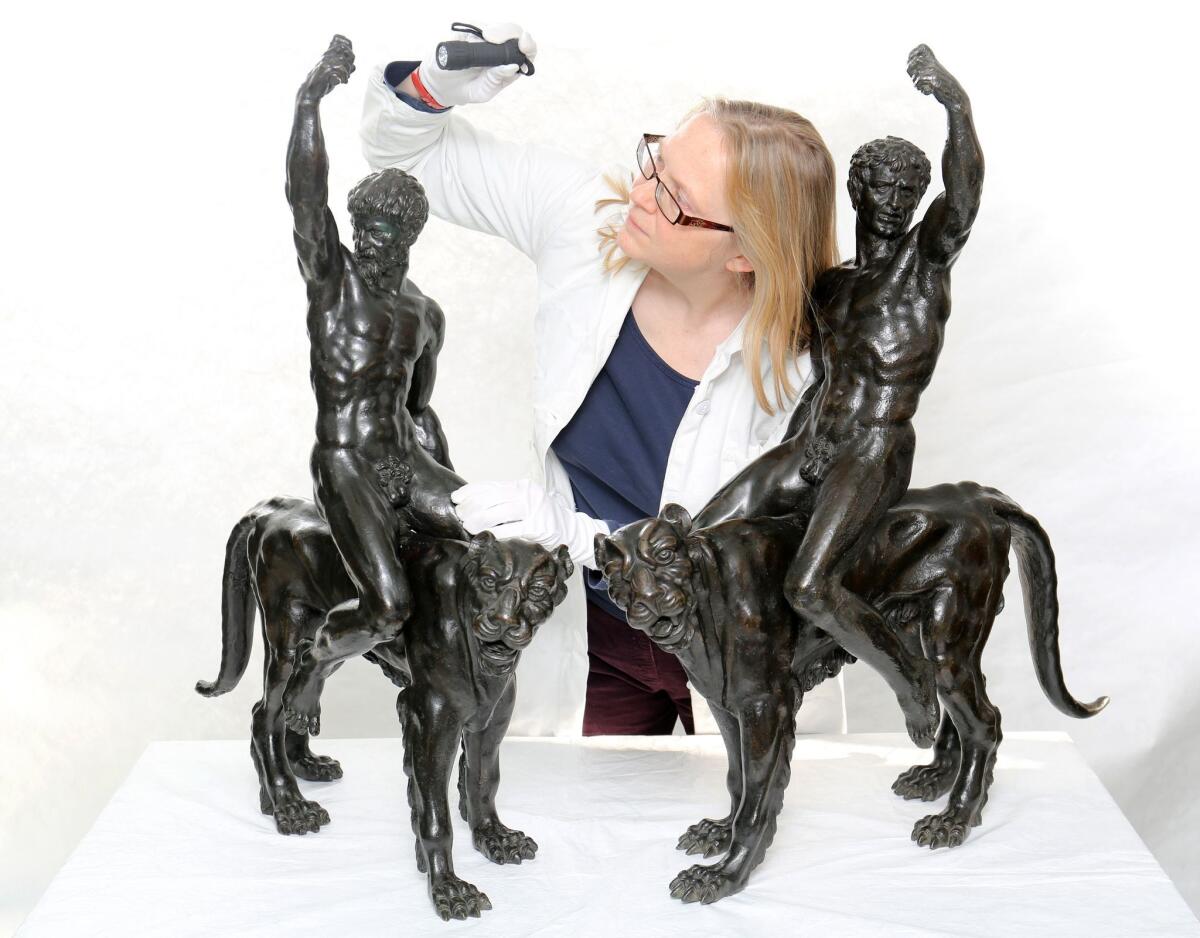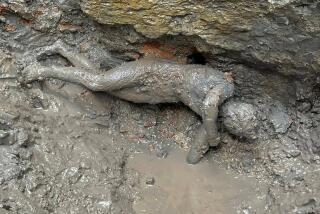Did Michelangelo create these nude bronze sculptures?

- Share via
An international team of experts published evidence on Monday that suggests two bronze sculptures of hazy origin are actually works by Michelangelo. The pair of bronzes, which depict nude men riding panthers, are nearly 500 years old and are believed to have been created after Michelangelo completed his famous sculpture of David.
The bronze works, undocumented and unsigned, have been attributed to various artists in the past, according to the Fitzwilliam Museum in Cambridge, England. The expert team worked with the museum and the University of Cambridge on the project.
If the attribution bears out, the works would be the “only surviving Michelangelo bronzes in the world by his hand,” the museum said on its website.
Michelangelo is often associated with marble, but art historians believe he also sculpted with bronze. The key piece of evidence regarding the two sculptures is a sheet of drawings by one of Michelangelo’s apprentices that resides at the Musée Fabre in Montpellier, France.
The sheet contains a composition of a muscular young man riding a panther and striking a pose similar to the bronzes. The composition was drawn in the same style that Michelangelo employed in designs for sculpture, according to the museum.
The connection was made by Paul Joannides, an emeritus professor of art history at the University of Cambridge. Further analysis showed that the bronzes are similar in style and anatomy to works that Michelangelo created between 1500 and 1510.
Experts believe that the bronzes were early works by Michelangelo and were completed after the David sculpture and before the artist started work on the ceiling of the Sistine Chapel.
The Fitzwilliam Museum said that the bronzes are a non-matching pair, with one depicting a young man and the other an older male. It said the bronzes’ first recorded attribution was to Michelangelo when they appeared in the collection of Adolphe de Rothschild in the 19th century. But because the works are undocumented, this attribution was eventually dismissed.
The works are on display at the Fitzwilliam through Aug. 9.
Twitter: @DavidNgLAT
More to Read
The biggest entertainment stories
Get our big stories about Hollywood, film, television, music, arts, culture and more right in your inbox as soon as they publish.
You may occasionally receive promotional content from the Los Angeles Times.










